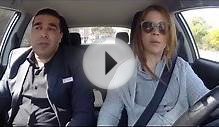
Once you have a learner permit, you must
- obey the learner permit restrictions on where and when you may drive
- complete a 5-hour Pre-licensing Course or a high school or college Driver Education Course
- get an appropriate amount of supervised driving practice
- if you are under age 18, you must wait at least six months from the date you received your learner permit to schedule your road test
What is the Pre-licensing Course and how do I find one?
It is a DMV-approved, standardized classroom course that provides knowledge that you will need as a new driver. This course is often the first formalized training a new motorist gets. The course covers many important topics, including
- driving within the highway transportation system
- driver habits and skills
- feelings, attitudes and risk taking
- alcohol, other drugs and driving
The Pre-licensing Course is available through high schools, colleges, and many driving schools. To find providers in your area, look online or in your telephone directory for “Driving Instruction.”
When you successfully complete the course, you will be given a Pre-licensing Course Certificate (MV-278). If you complete a high school or college driver education course, you will receive a Driver Education Certificate (MV-285), and you do not need a Pre-licensing Course Certificate. You must have one of these certificates to schedule your road test. You must bring the original certificate to your road test to turn in to the license examiner.
For how long will my Pre-licensing Course Certificate be valid?
Your Pre-licensing Course Certificate is valid for one year from the date it is issued. A Driver Education Certificate is valid for two years. If your Pre-licensing Course Certificate expires, you must complete the course again to receive the certificate required to schedule a road test.
Your certificate must be valid on the date that you make your Road Test appointment, but can be expired on the date you take your road test.
Do I need a Pre-Licensing Course Certificate to change my license from one class to another?
No, you do not need a Pre-licensing Course Certificate or a Driver Education Certificate if you have a valid NYS driver license and you apply to amend to another license Class.
How much supervised practice driving must I get before I take my road test?
If you are under age 18, before you take your road test you must
- have a minimum of 50 hours of supervised practice driving with
- at least 15 hours at night (after sunset)
- at least 10 hours in moderate to heavy traffic
- bring to the road test a Certification of Supervised Driving (MV-262) completed by your parent or guardian to certify that you have had the required hours of supervised practice driving (you must give the MV-262 to the license examiner each time you take a road test)
We recommend that all drivers of all ages have this amount and type of practice. We also recommend that you take a driver education course or professional driving lessons.
What should I practice for my road test?
- Steering: Steer smoothly whether you are driving straight ahead, turning or backing up.
- Acceleration: Accelerate smoothly and moderately. Don't race the engine or cause it to stall.
- Braking: Bring the vehicle to a stop gently. Start braking well before your stopping position to avoid abrupt stops. Make sure you stop your vehicle in the proper position of the lane.
- Clutch/Gears: Always be sure your vehicle is in the correct gear. With either an automatic or a manual transmission, shift into the proper gear at the right time without "grinding" the gears.
- Speed: Obey the posted speed limit, of course, but also adjust your speed properly due to weather, road, visibility and traffic conditions.
- Following distance: Keep an adequate space"cushion between your vehicle and those you are following. Use the "two second rule" described in the Driver's Manual. Be sure to increase your following distance in poor weather or visibility.
- Traffic signs, signals and markings: Know the meanings of signs, signals and pavement markings, and obey them consistently.
- Stopping position: If a stop is required, stop your vehicle before it reaches an intersecting street. If stop lines or crosswalks are present, stop before crossing them. If your view is blocked after stopping behind the crosswalk, move up until you can clearly see your way, then stop again if necessary.
- Lane selection and position: Keep your vehicle in the proper traffic lane, especially when preparing to make turns. Don't allow room for another vehicle to pass you on the side that you are turning toward.
- Communication: Let other drivers and pedestrians know which way you want to go. Use your directional signals or horn consistently and at the proper times.
- Observation: Look for and identify potential problems or hazards in the traffic around you - not just straight ahead, but behind you and on either side. Check your mirrors frequently, but be sure to look over your shoulder behind you when changing lanes or backing up.
- Anticipate and react:
INTERESTING VIDEO












